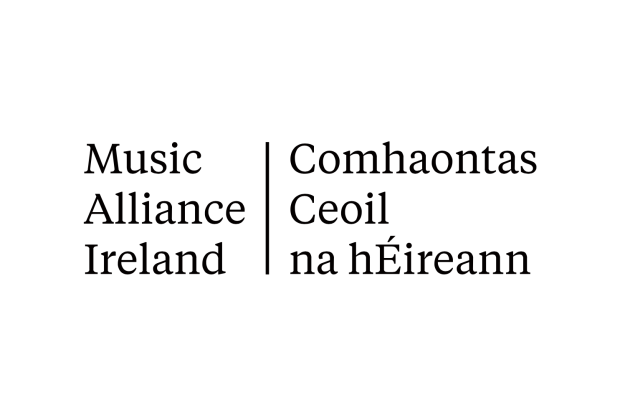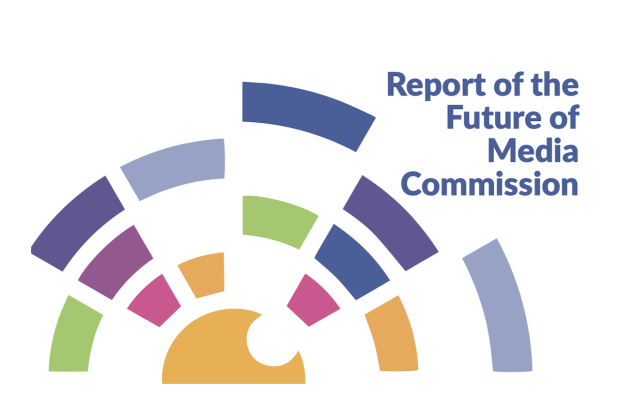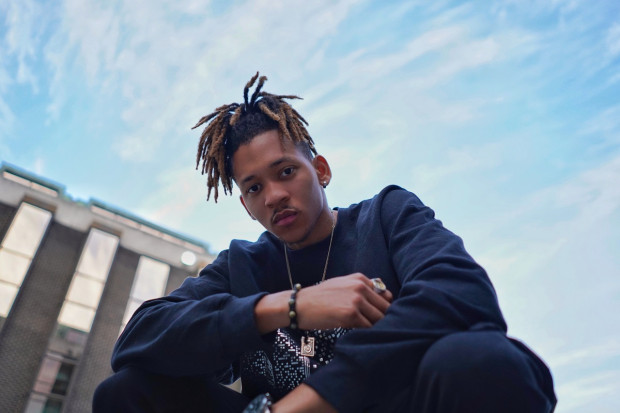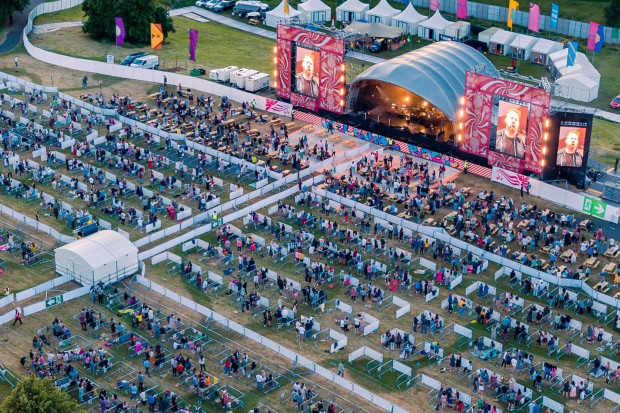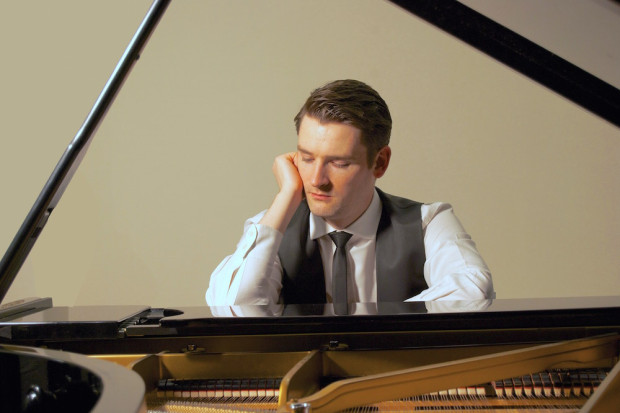
The harp-shaped Samuel Beckett Bridge in Dublin – music is part of Irish identity, but does this turn into support?
A Future for Irish Music
In the same year as RTÉ Lyric FM began, in 1999, I came back to Ireland from Scotland, where I had been studying publishing, and began planning a music magazine that would focus on classical, contemporary, traditional music, jazz and more in Ireland.
The Journal of Music was launched a year later, and, in the beginning, it seemed quite possible to keep up to date with what was happening in music in Ireland. Gradually, though, as the digital world became busier, and the information started to flow more freely, it became clear that there were not enough editors in the world to keep track of musical life. It was much more diverse and busy than we ever could have imagined, and the internet was revealing the scale of activity. From a trickle in 2000, it became a small avalanche of information in 2010, and now, in 2019, we deploy all sorts of technological devices just to keep up to date – and it’s still not enough.
But the internet has also had a multiplier effect on musical life. As audiences find out more about what is happening around them, it drives up interest, grows demand and participation levels, which generates further demand, and so musical life becomes even busier. If you want proof, just look at the number of festivals – from pop to classical – that now take place in Ireland every year. It is unprecedented.
This is a new musical world, and, as all of this information crosses my editor’s desk every day, I often wonder how we are adapting to it. On the surface, I see change, as musical tastes become broader and our musical life more diverse, but beneath that I see the same perennial issues coming up again and again. I think we should use the opportunity of this new musical world, and all the opportunities it brings, to finally address some of the issues that we have been facing for decades.
Our musical ecosystem
RTÉ Lyric FM was launched on 1 May 1999. If you look back on some of the news coverage around that time, what’s interesting, amidst all the excitement, is how much of the media commentary focussed on the commercial aspects of the new station: the business model; the market niche; the balance between state and commercial income; the influence of Classic FM and BBC Radio 3; the focus groups that suggested what listeners wanted.
Music was mentioned, of course, particularly classical music, but here again the main question was a commercial one, whether the output would be ‘high-brow’ or ‘low-brow’, as if that was the only conversation we should be having.
It was a discussion of its time – market-driven, influenced by British broadcasters. We didn’t have the plethora of platforms that we have today to discuss what the launch of Lyric really meant. We didn’t even think about Lyric in terms of its impact on other musics in Ireland. Information didn’t flow as freely as it does today, and so our understanding of the Irish musical ecosystem, and Lyric’s potential place in it, was limited. These days, because of the internet, we can see more clearly how musical ecosystems work. Everything is interconnected.
A broadcaster plays a key role, along with promoters, artists, educators, audiences, labels, bands and orchestras, resource organisations, and funders. But, in the context of 1999, the limited commentary was understandable – and yet it still fascinates me how narrow it was and how much things have changed.
Holistic discussion
What was actually being launched in 1999 was a major piece of infrastructure into the Irish musical ecosystem – and what an extraordinary moment for Irish music it was, just three years after the launch of TG4. The potential musical impact of the combination of these two initiatives should have occupied public discussion for months.
Were Lyric to be launched today, I think that we would discuss it in a much broader and more holistic way, focussing on its creative role as part of the ecosystem, how it might reflect communities, connect audiences and artists, portray the diversity of our musical world. And we would be less caught up with what Classic FM was doing or perhaps even with the genre of music.
The reason the conversation has changed is partly because we are more confident about our cultural expression, but, more importantly, because of the digital age.
The century of recorded music
In 1999, musically speaking, we were at the end of what has been called the century of recorded music, a commodification of music that did its job very well. It organised musical life like a record store: classical music there, pop music here, ‘Irish music’ being anything from country music to rebel songs. Music was reduced to being a product, a market segment.
But things were changing. The DIY recording revolution of the 1990s meant young musicians were now empowered to do their own recording. In June 1999, just one month after RTÉ Lyric FM went on air, the website Napster appeared and opened up the possibility of distributing music in an entirely new way – via the internet.
Two years later, Apple’s iPod did the unimaginable, by putting ‘a thousand songs in your pocket’, as Steve Jobs described it. iTunes and MySpace further broke down our attachment to the old physical album collection, and with YouTube, and the smartphone, the internet began exposing us to the true diversity of our musical world.
In more recent years, streaming services have offered a veritable history of recorded music in our pockets, never mind one thousand songs. All this within the space of a couple of decades.
The result of this twenty-year revolution in the distribution of music is not only that it has exposed us to a much wider range of sounds, it has dissolved many of the hard boundaries that had previously existed between musics. It has also increased our consumption of music; fuelled demand for concerts and festivals; broken down walls in music education; encouraged wider musical participation; and created professional opportunities.
Our daily lives are now filled with music and it is more personalised than ever. From rising in the morning, through travelling, working, eating, relaxing and going to sleep, personalised selections of music – increasingly voice activated – are an intimate part of our routine.
Music, it seems – as if anyone ever thought it possible – has become even more important to our lives.
The challenge
As a musician, I look at this moment and I see the opportunity and the challenge. The demand for music, and everything associated with it, from listening to performances to education, is going to increase further. The internet is actually demonstrating that music plays an intrinsic part in all of our lives. It is not just a product, it is us expressing ourselves, more freely than ever before.
And yet, just because there is change happening around us, does not mean that we are prepared for it. In Ireland, we may be particularly unprepared, for a couple of reasons.
Firstly, our musical infrastructure is in demand but under-resourced. I have long mulled over the reason why this is. How can Ireland be so famous around the world for its music, and yet its musical infrastructure at home is creaking at the seams? How have we allowed this happen? What connection is not being made? A lot of it comes down to how we think about music.
‘Oh I couldn’t let you go without a little song’
A couple of months ago, you may have seen a parody by the comedian Steve Coogan on social media. Coogan was portraying an Irish farmer named Martin Brennan who was a guest on This Time with Alan Partridge.
Just as the programme was ending, Brennan began singing – ‘Oh I couldn’t let you go without a little song’, he said, in a perfect Irish accent, and began a short medley of three Irish folk songs: ‘When You Were Sweet Sixteen’, ‘Come Out You Black and Tans’ and ‘Men Behind the Wire’. I acknowledge that some people were unhappy with the connection he made to the Troubles in the North, but I want to focus on the musical aspect.
Alan Partridge tried to stop Brennan singing, but he couldn’t, and so he was resigned to clapping along. Suddenly it was something like an Irish pub session. The farmer was unrelenting, sure in his belief that what the occasion needed was a song.
The reaction on social media was immediate – Coogan had nailed it. People recognised this character. It was an Irish thing – the notion that no occasion was complete until someone had broken into song, that spontaneous music-making is part of who we are, that the Irish are ‘naturally musical’.
Except, of course, that it’s a myth.
We are not the only people to be spontaneous about music. I have travelled widely as a musician, from Uzbekistan to India, and I have seen the same deep attachment to informal, spontaneous musical expression around the world, and yet somehow it has become a unique part of our self image.
The myth of the musical Irish developed because it served a purpose. We were a displaced people and it helped us find our place in the world. At a certain stage, however, every myth outlives its purpose. It starts to hold us back rather than drive us forward. There are real practical reasons why we need to evolve this myth so it serves us better.
The myth of the musical Irish
If we think we are naturally musical, or, more precisely, if politicians think that we are naturally more musical than other countries, then it’s very easy to sit on our hands when it comes to hard decisions about supporting music. A myth like that makes us complacent, lazy even. That is why we need to address it.
I don’t want to reject the notion that Ireland has spontaneously creative and fun people like Martin Brennan. We do – but I want to dispel the idea that music ‘just happens’ in Ireland.
For every talented eleven-year-old fiddle-player that you see joining in a session at the Willie Clancy Summer School, or the singer-songwriter who has become a Spotify sensation, or the classical singer who is making their way on the international operatic stage, we need to see beyond that and recognise the musical infrastructure that nurtured that talent over years, if not decades, and the resources needed for that to exist.
Neither do I want to pretend that Ireland does not have a long and rich history of music, but I do want to tackle the impression that it has somehow survived without any help. In fact, from Donegal fiddle-playing to Irish harping, a huge voluntary effort has gone into ensuring that some sort of structure exists so that these musical repertoires and stylistic practices can survive over time.
And I don’t want to deny the fact that Ireland has world-beating, incredibly talented artists across all genres, but I do want us to realise that many musicians who have made an incalculable contribution to Ireland through their success on the global stage still struggle financially. We do not have the structures to ensure that they are supported throughout their life so they can develop some long-term security.
So you can see how the ‘myth of the musical Irish’ is actually leaving large lacunae in our musical infrastructure because we presume that music in Ireland ‘just happens’.
The music critic Adrian Smith recently wrote in the Journal of Music, with regard to contemporary music in Ireland: ‘the problem is not that significant things don’t happen. Things do happen, it’s just that there’s no vision or desire to carry these initiatives to their full potential.’
Why is this? It is deeply connected to the above myth, and it leaves us unprepared for the new musical world.
Disunity
There is another reason why we are unprepared. Like RTÉ Lyric FM, the Journal of Music too will be twenty years old next year, and so I surprisingly find myself in the position of someone with a relatively long view of Irish music.
Although I can see that music in Ireland is more diverse than I could have imagined at the beginning, I also notice that the challenges facing every single music organisation and every artist are basically the same: education, opportunity and professional development. Every promoter and organisation is involved in one or other of these areas, trying to progress their work within the precariousness of arts funding and the radically changed commercial environment. And yet, despite the similarities in the challenges, the Irish music world does not work as one.
In the absence of a strong determination to pull together, we have been subsumed into the wider arts world, where the aspirations are too general to be useful to us.
When Lyric FM arrived, for example, did we, across the music sector, all work in concert to ensure the success of the station? Or did we stay behind our walls and wait to see what it would do for us? Perhaps in 1999, we could be forgiven for not always being aware of what was happening around us, but that is no longer an excuse.
The instinct – and it is a hang-up from the old musical world – has been to protect our patch, but the digital era is dissolving the differences between us, demonstrating how small a musical scene we are working in, and yet, across genres and sectors, we are all competing for the same piece of pie. After 20 years, I can see the result of this disunity – a music sector that in too many areas is still going around in circles.
For example, each year, independent artists and music organisations across Ireland put countless thousands of euro into recordings, and yet we have no full-time, well-resourced, not-for-profit record label.
Similarly, throughout the year, huge sums of money go into organising concerts and festivals, and yet we still have no agreed rates of payment for artists.
Also, throughout Ireland, families spend enormous amounts on private music education for children, and yet, as Dr Orla McDonagh of TU Dublin Conservatory pointed out to an Oireachtas committee meeting last May, there is very little regulation in this area to ensure quality.
These are just some of the challenges facing musical life in Ireland. It is likely that, as the digital world develops, our musical life is going to become even more complex, and, however creative and tech-savvy we are in our separate silos, it is unlikely that we will be able to address any of these challenges unless we take a more unified approach and work together.
Does it need a new Forum for Music in Ireland like we had in the early 2000s? Or an annual music convention for everybody in music, like Wide Days in Scotland? I don’t know, but the good news is that we have a rich musical ecosystem with which to start this conversation, and, of course, we have RTÉ Lyric FM.
This essay was broadcast on RTÉ Lyric FM on 1 May at the interval of the 20th Anniversary Gala Concert. Listen to a recording of the essay below.
Published on 2 May 2019
Toner Quinn is Editor of the Journal of Music. His new book, What Ireland Can Teach the World About Music, is available here. Toner will be giving a lecture exploring some of the ideas in the book on Saturday 11 May 2024 at 3pm at Farmleigh House in Dublin. For booking, visit https://bit.ly/3x2yCL8.










